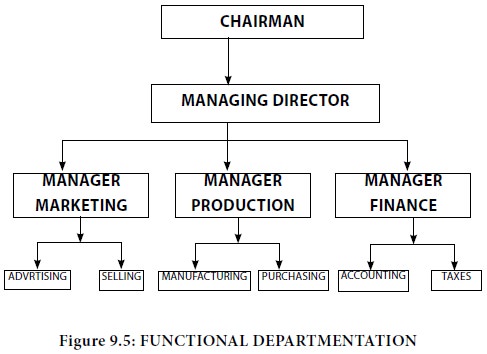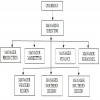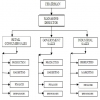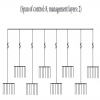Home | ARTS | Management Concepts & Organisational Behaviour
|
Functional Departmentation - Organisation Structure And Design
Management Concepts & Organisational Behaviour - Organisation Structure And Design
Functional Departmentation - Organisation Structure And Design
Posted On :

This is perhaps the most logical and simple form of departmentation. Functional departmentation is the process of creating organizational units on the basis of the firm’s major activities.
Functional Departmentation
This is perhaps the most logical and simple form of departmentation. Functional departmentation is the process of creating organizational units on the basis of the firm’s major activities. It involves grouping employees according to the broad tasks they perform. Normally separate departments are created for all the key activities of the business. For example, in a manufacturing company, the activities essential to the existence of the company relate to production, marketing human resources and finance. However, in non-manufacturing concerns the primary activities may differ. In a transport company, the key areas may be operations, sales and finance. Thus, public utility concerns like electricity, transport, banking, insurance and hospitals have their own distinct key functional areas. In all these cases, under functional departmentation, major or primary departments are created along the key functional areas of the respective business.
If the organization is large, or in other words, as the organization grows, major departments can be subdivided. These sub divisions or departments are called derivative departments. The essential idea is to take advantage of specialization. A typical functional organization with major departments and derivative departments is shown in figure.
The following are the advantage and disadvantages of functional departmentation.
Advantages:
-- It is the most logical and simple form of departmentation;
-- It makes efficient use of specialized resources and skills;
-- It makes supervision easier, since each manager has to be an expert in only his or her functional area of operation; and
-- It fosters development of expertise in specialized areas.
Disadvantages:
-- Functional departmentation is often found to be inadequate to meet the growing needs of the business, particularly as the organization expands or diversifies its activities;
-- Further, decision-making becomes slow as the functional managers have to get the approval of the headquarters;
-- It is also difficult to determine accountability in a functional structure. If a product fails, the question as to who is responsible cannot be easily answered; and
-- Functional managers tend to develop narrow perspective and loose sight of the bigger picture. Members of each department feel isolated from those in other departments. For example, manufacturing department may be obsessed with cost reduction and meeting the delivery dates neglecting the quality control. As a result, marketing department may be flooded with complaints.
This is perhaps the most logical and simple form of departmentation. Functional departmentation is the process of creating organizational units on the basis of the firm’s major activities. It involves grouping employees according to the broad tasks they perform. Normally separate departments are created for all the key activities of the business. For example, in a manufacturing company, the activities essential to the existence of the company relate to production, marketing human resources and finance. However, in non-manufacturing concerns the primary activities may differ. In a transport company, the key areas may be operations, sales and finance. Thus, public utility concerns like electricity, transport, banking, insurance and hospitals have their own distinct key functional areas. In all these cases, under functional departmentation, major or primary departments are created along the key functional areas of the respective business.
If the organization is large, or in other words, as the organization grows, major departments can be subdivided. These sub divisions or departments are called derivative departments. The essential idea is to take advantage of specialization. A typical functional organization with major departments and derivative departments is shown in figure.

The following are the advantage and disadvantages of functional departmentation.
Advantages:
-- It is the most logical and simple form of departmentation;
-- It makes efficient use of specialized resources and skills;
-- It makes supervision easier, since each manager has to be an expert in only his or her functional area of operation; and
-- It fosters development of expertise in specialized areas.
Disadvantages:
-- Functional departmentation is often found to be inadequate to meet the growing needs of the business, particularly as the organization expands or diversifies its activities;
-- Further, decision-making becomes slow as the functional managers have to get the approval of the headquarters;
-- It is also difficult to determine accountability in a functional structure. If a product fails, the question as to who is responsible cannot be easily answered; and
-- Functional managers tend to develop narrow perspective and loose sight of the bigger picture. Members of each department feel isolated from those in other departments. For example, manufacturing department may be obsessed with cost reduction and meeting the delivery dates neglecting the quality control. As a result, marketing department may be flooded with complaints.
Tags : Management Concepts & Organisational Behaviour - Organisation Structure And Design
Last 30 days 7058 views
















